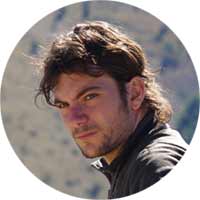The course presents the principles of evolution, ecology, and behavior for students during their study of biology and of the environment. It discusses major ideas and results. Recent advances have energized these fields with results that have implications well beyond their boundaries: ideas, mechanisms, and processes that should form part of the toolkit of all biologists and educated citizens.
About the course
Major topics covered by the course include the physical environment, how organisms interact with each other and their environment, evolutionary processes, population dynamics, communities, energy flow and ecosystems, human influences on ecosystems, and the integration and scaling of ecological processes through systems ecology.
This course will also review major ecological concepts, identify the techniques used by ecologists, provide an overview of local and global environmental issues, and examine individual, group and governmental activities important for protecting natural ecosystems. The course has been designed to provide technical information, to direct the student toward pertinent literature,to identify problems and issues, to utilize research methodology for the study of natural ecosystems, and to consider appropriate solutions and analytical techniques. Discussion and understanding will be emphasized.
Target Audience
- Lower-intermediate division undergraduate
- Upper division undergraduate
- Professional or Graduate
- Master and Ph.D. students
Terms and Conditions
To access the course content, you’ll need to register on the platform and to enroll into the course. When a learner is enrolled, the course appears on their course dashboard. All enrolled learners (including auditors and learners in the premium experience) receive course announcements, deadline reminders, and progress tracking.
Instructor

Roberto Cazzolla Gatti
Ph.D., Associate Professor in Ecology and Biodiversity,
Biological Diversity and Ecology Laboratory,
Bio-Clim-Land Centre of Excellence, Biological Institute, Tomsk State University

